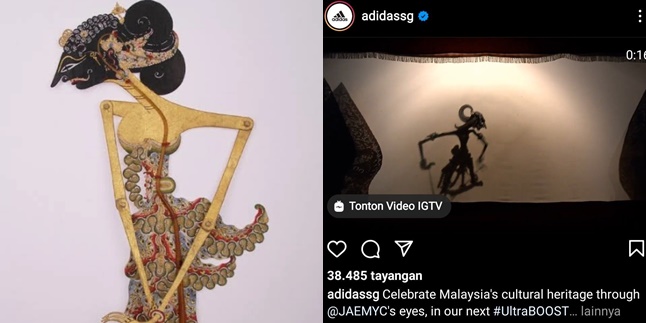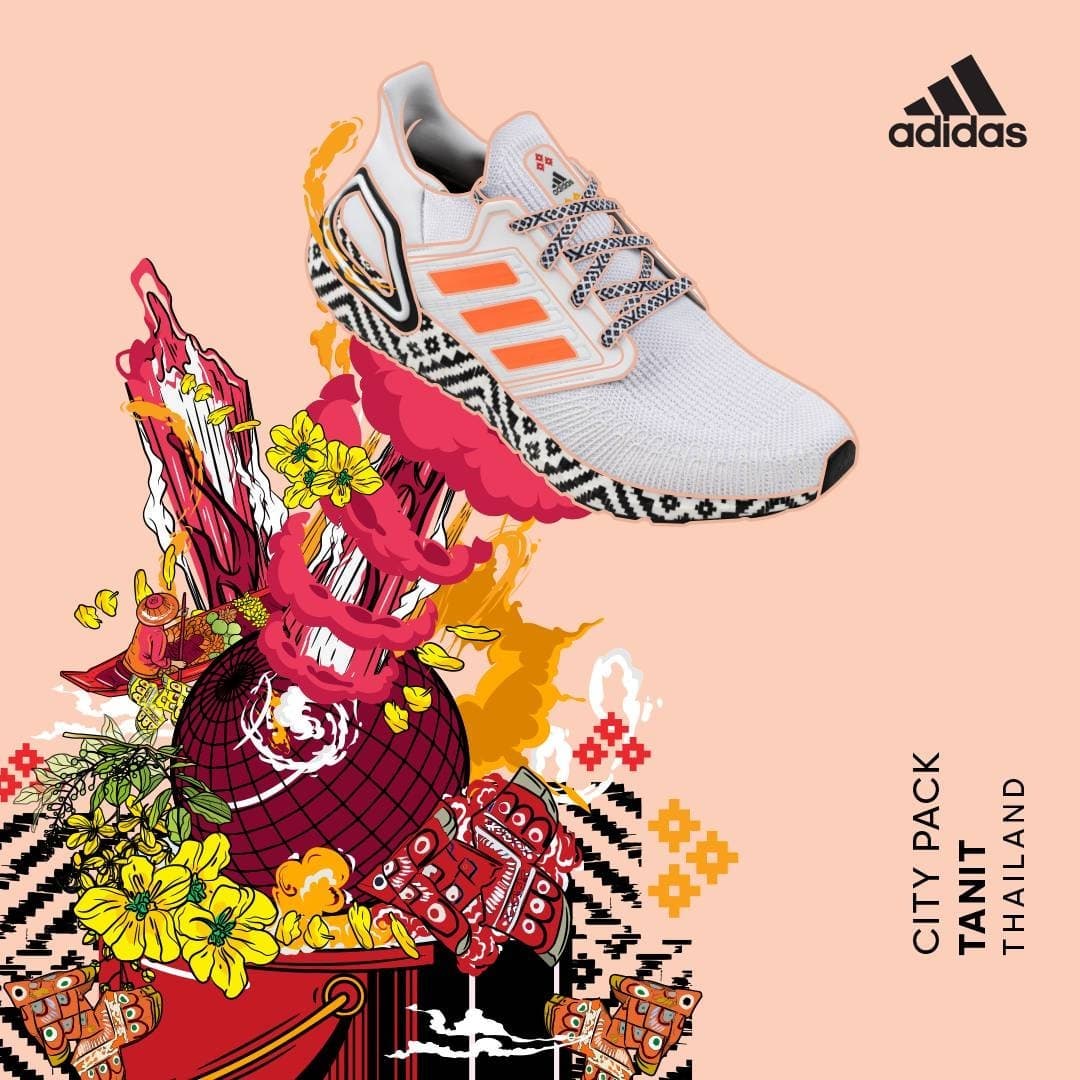His Cheerfulness Slowly Returns, 7 Pictures of Baby Gala Starting to Play Actively - His Smile is So Precious
Netizens are happy to see the improvement of Baby Gala.

Kapanlagi.com - The online world was shocked by Adidas' Instagram post, a shoe manufacturer from Singapore. The reason is, Adidas referred to Wayang Kulit as part of Malaysian culture. The post immediately sparked controversy among netizens, especially Indonesians who questioned why Indonesian culture was claimed by the neighboring country.
"This design pays tribute to Wayang Kulit, a significant part of Malaysian cultural identity and heritage by blending Wayang Kulit elements with modern color palettes, in an "old-meets-new" approach in UltraBOOST DNA," wrote the Adidas ad in one of its Instagram video posts.
The video is the launch of Adidas' new shoe collection, Ultraboost City Park. In this latest collection, Adidas incorporates Wayang Kulit elements. Unfortunately, Adidas referred to Wayang Kulit as part of Malaysian culture.

Adidas Instagram Apology Story (Credit: Instagram.com/adidassg)
The Adidas post was immediately bombarded by Indonesian netizens. It even entered several gossip and news accounts. After the post was flooded with thousands of harsh criticisms from Indonesian citizens, Adidas Singapore finally spoke up and changed the caption of the video post.
Previously, Adidas referred to Malaysia as the country that owns the cultural heritage of Wayang Kulit, but they eventually changed it by including Indonesia as the original owner of Wayang Kulit culture. Adidas also apologized through their post regarding their mistake.
"Dear All, Thank you for pointing out our mistake. Regarding our post that stated Wayang Kulit as part of Malaysia's culture, we must emphasize that Wayang Kulit originated from Indonesia. We sincerely apologize for any offense caused by our unintentional post," wrote the @adidassg account in their Instagram story.
Like rice turning into porridge, this Adidas Singapore post has gone viral on various social media platforms, Instagram, Facebook, and especially Twitter. Many people regret the post from the shoe manufacturer, but there are also comments stating that Wayang Kulit also exists in neighboring countries, although in the post Adidas clearly used Wayang originating from Java.
"Malaysia also has a culture called Wayang Kulit, while the one posted by adudu is Javanese Wayang Kulit. So here the mistake lies with Adudu, not Malaysia (in my opinion). And from what I see, the image on the shoes is more inclined towards Malaysian shadow puppetry, but the video is of Indonesian shadow puppetry," wrote the account @cocolatenextar on Twitter.
So, is it true that Wayang Kulit culture originated from Indonesia? What is the response of Indonesian puppeteers to this?

Adidas Singapore (Credit: Instagram.com/adidassg)
When interviewed by Kompas.com, Dalang and Traditional Art Manager at the Cultural Office of Surakarta City, Central Java, Diwasa Diranagara also spoke up. Diwasa said that puppetry art in general can be found in various regions or cultures.
"Every country has its own puppetry, like our wayang, wayang Jawa. There is also wayang potehi in China. Outside of Java, there are also other forms like wayang sasak from Lombok and various forms from each region," said Diwasa, when contacted by Kompas.com on Tuesday (16/11/2021).
Diwasa reiterated that if it is referred to as Wayang Kulit, it specifically refers to the puppetry originating from Java. Diwasa added that the history of Wayang Kulit can be traced back to the Kahuripan Kingdom era led by King Airlangga. Furthermore, the origin of Wayang Kulit itself comes from Wayang Bali.
During the Majapahit Kingdom era, Wayang Bali underwent changes with the addition of movable puppet hands. Wayang Kulit underwent further changes when power in Java was led by the Demak Kingdom, which embraced Islam. Diwasa emphasized that the Wayang Kulit known to many people today is the result of refinement by Sunan Kalijaga from the Majapahit Kingdom.
"Logically speaking, it is not possible for the hands to be long enough to touch the feet. It has been perfected by Sunan Kaligaja," said Diwasa. From there, Diwasa concluded that Wayang Kulit is indeed a cultural product of Java, Indonesia.

Wayang Kulit (Instagram.com/wayangkulit_official)
UNESCO designates Wayang Kulit as the Masterpiece of The Oral and Intangible Heritage of Humanity or Great Cultural Work of the World from Indonesia. According to UNESCO, wayang is a highly valued cultural heritage because it is a craft art, and a combination of literature, music, and visual arts.
According to Indonesia.go.id, the word wayang comes from the Sanskrit language 'Ma Hyang' which means towards spiritual beings, gods, or the power. However, some also say that the term wayang comes from a performance technique that relies on shadows on the screen.
Wayang kulit is made from dried buffalo skin. Meanwhile, the elbow part is made of buffalo horns that are connected using screws to make the wayang movements appear more dynamic. Wayang kulit performances are played by a puppeteer behind a white cloth or screen illuminated by a lamp, resulting in shadow movements of the wayang. The puppeteer also serves as the narrator of the dialogue between the characters in the story. Wayang kulit performances are also accompanied by gamelan music played by a group of musicians, and songs sung by a singer.
(kpl/mag)
Cobain For You Page (FYP) Yang kamu suka ada di sini,
lihat isinya
Netizens are happy to see the improvement of Baby Gala.
The names Henny Rahman and Larissa Chou are currently the talk of the public.
In her latest Instagram post, Mutia Ayu looks even slimmer and more beautiful with long hair. Curious?
From Nikita Mirzani to Sheila Marcia, these celebrities have decided to remove tattoos.
Zaskia Gotik still looks stunning even though she has just given birth to her first child. What does her latest portrait look like?
Zaskia Sungkar always wears matching outfits with Ukkasya on every occasion.
Adorable behavior of Baby Chloe, Asmirandah's child, successfully attracts attention.
Let's take a look at the beautiful and graceful portraits of Rara LIDA at the 2021 AMI Awards!
Two months after being taken to the National Brain Center hospital, Tukul Arwana's condition still requires various treatments to recover.
Photos of Ibnu Jamil getting closer to Ririn Ekawati's two stepdaughters.
Although she has won custody rights, Tsania Marwa still cannot meet her children.
Gisella Anastasia has just celebrated her 31st birthday. What sweet surprises did her boyfriend, Wijin, give her?